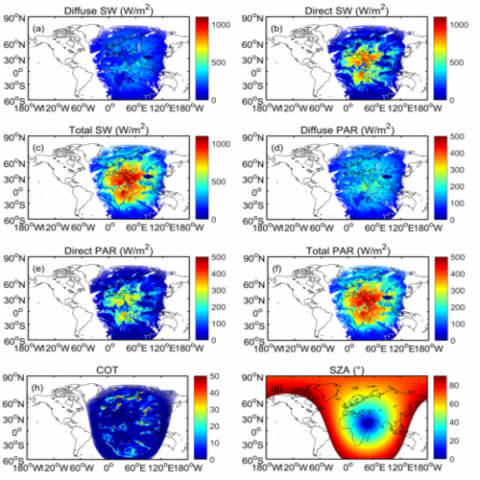Dataset
Both the hourly and daily data are provided in the product. The hourly data are grouped by day in distinct NetCDF files, which are named as “EPIC_SW_PAR_Hourly_yyyymmdd.nc” where “yyyy”, “mm”, and “dd” denote year, month, and day (UTC time). The daily data are grouped by month in distinct NetCDF...

